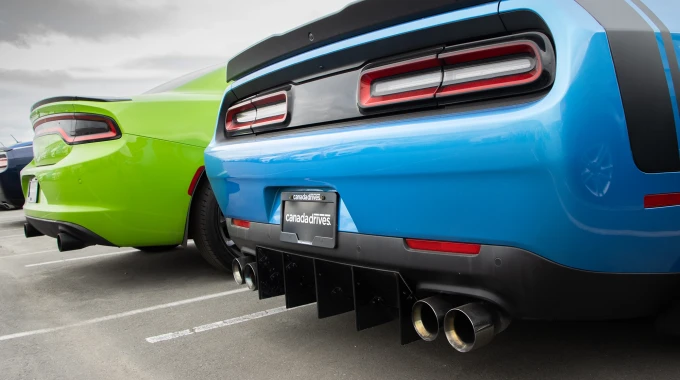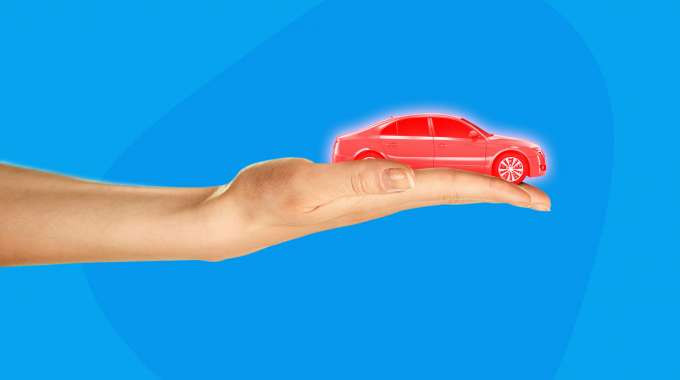
How Much Will My Insurance Increase After a Car Accident?
Insurance companies use specialized formulas and calculations to determine the risk factor you pose, which helps determine the rate you pay for coverage.
Those formulas and calculations vary from insurer to insurer, and your age, locale, driving history and driving habits also factor into the mix. So does the age and type of vehicle you drive, and how expensive it is to repair.
The point is, when it comes time to answer the question “How much will my insurance increase after a car accident?” there’s no single, solid answer.
Below, we’ll dive into some of the terminologies, principles and rules affecting auto insurance rates, and what could happen to yours after an accident. Also, here's a look at what Canadians pay on average each month.
Understanding the two types of car accidents that impact insurance
Assume there are two types of car accidents: accidents that are your fault, and accidents that are not your fault.
At-fault vs not-at-fault accidents
At-fault accidents come in many shapes and sizes, and two of the most popular are rear-ending another vehicle, or encountering ‘black ice’ in wintertime and sliding off of the roadway. In both of these types of accidents (and many others), the driver is deemed to be at fault.
Common not-at-fault accidents include being hit by another driver while parked or at a stop sign, or a collision with an animal. However, if you swerve to miss an animal and go off the road or hit another vehicle, then your actions are considered to have caused that accident, and your insurance company will consider you at-fault.
Aren Mirzaian is the CEO of My Choice, a Canadian insurance comparison website that aims to help users lower their insurance rates by empowering them with options.
“Anecdotally speaking, the most common type [of not-at-fault accident] we hear about is a driver getting rear ended while stopped or in forward motion” he says.
“In this case, the driver that got rear ended is not at fault. Another type is getting hit while coming out of a driveway or a parking spot. In this case, the driver that got hit by the person leaving a parking spot is not at fault. The responsibility is on the driver leaving the parking spot to check their surroundings.”
Who is at fault in a car accident?
In an at-fault accident, your actions are deemed to be partially or fully responsible for the accident. If that accident involves another driver, and if the actions of both drivers contributed to the crash, a portion of the fault would be assigned to each driver.
In an at-fault accident, your insurance company consults a list of fault determination rules, which is basically an official instruction manual within the Insurance Act that’s used by all insurance companies to make sure everyone’s treated fairly.
Remember, in an at-fault accident, you might be found partially or totally at fault.
If you’re not found at fault, that’s a not-at-fault accident, and you’re zero percent responsible.
So am I off the hook for not-at-fault car accidents?
If you have a not-at-fault accident, does that mean you’re off the hook for an insurance rate increase?
Probably, though you’ll lose your zero loss or accident-free designation (if it’s part of your policy). This form of ‘accident forgiveness’ gives drivers a free pass on their first accident, without a rate hike, in most situations. If you have a not-at-fault accident, your rate may not increase, but your accident forgiveness gets used up.
“Technically, your insurance rates won’t increase” explains Mirzaian.
“With that said, some insurance companies have a “claims-free” discount. If your accident results in a claim (at-fault or not) that claims free discount goes away and your premiums may go up by 5-15%, depending on the carrier.”
Additionally, a not-at-fault accident could result in a slight rate increase for all policy holders, meaning drivers would see an indirect increase in rates.
So, what’s no-fault car insurance?
A not-at-fault accident is an accident you didn’t cause, but what’s ‘no-fault’ insurance?
The term is a little misleading.
In 1990, not-at-fault insurance came into effect with the intention of stopping the back and forth between lawyers and insurance companies, potentially making the insured or the policy holder sit for months in limbo and incurring cost to themselves for hospital bills and or vehicle repairs.
With no-fault insurance, your insurance company (and not the third party that may have caused the accident) repairs your vehicle and takes care of you for accident benefits like hospital costs, prescriptions, rehabilitation expenses, and the like.
Unlike a not-at-faut accident, no-fault insurance means that your insurance provider handles your claim for you. Rather than incur the cost and hassle of dealing with the other motorist’s insurance company, the policyholder is reimbursed by their own insurance company. This is no-fault insurance, and it means your claim is paid out by your insurance company, not somebody else’s.
If insurance is no-fault, why are there fault determination rules?
“No Fault Insurance, the term used to describe the system that we operate under, is a bit misleading” Mirzaian says.
“It means that the insurers will handle all costs/claims incurred during an accident, not the parties involved, avoiding court. The insurance companies representing drivers involved in an accident will look at fault determination rules to determine the relative percentage of fault assigned to each driver – to calculate the claim amounts each respective insurer has to pay”.
Your insurance company is still interested in, or even required, to determine fault after a car accident. Insurers may choose to subrogate for the losses in the event you are at fault, but it’s done in the background and doesn’t affect the policy holder.
Car insurance after an accident and Ontario’s $2,000 minimum
In Ontario, a 2016 update to the Insurance Act prevents insurance companies from raising rates for smaller claims (under $2,000) in certain situations. I asked Aren Mirzaian if other provinces have similar claim minimums before a rate increase can be applied.
“Not exactly” he comments.
“The only provinces that come close are Manitoba and BC, as they have public insurance systems offered by the government. Drivers in Manitoba and BC have the option to “buy back” their at-fault claim, removing it from their record, by reimbursing the provincial government for the full claim amount.
Technically, if your accident was under $2,000 in those provinces, you could pay back the claim and avoid an increase”.
Read more about car insurance laws, grace periods, and more for Ontario, Alberta, and British Columbia:
So, how much will my rates go up after an accident?
As we’ve outlined, this depends on a multitude of factors including the type of accident, fault determination, and your driving record. The specific factors used to determine how much your rate will increase are numerous, and specific to each insurer.
Your rates may not increase if you have an Accident Waiver Endorsement, but if you don’t qualify, one expert tells me you can expect an increase of between $500 and $2,000 depending on the variables which include whether it’s your first, second or third accident, as well as where you live, and the type of vehicle you drive.
In a total loss, if you replace your 2010 Honda Civic with a 2022 Ford Mustang Mach E, the rate increase would be substantial—so always check with your broker before purchasing a vehicle after a write-off.
One expert tells me that in Ontario, a $2000 accident and $500,000 accident are looked at in the same aspect. “I’ve always stated, if you can afford to pay out of pocket the damages and not use the At Fault Waiver protection to do so. Anything under $3,000, and you’ll be paying the insurance company back over the coming years in increased rates. That being said, If someone is hurt, that’s not even an option”.
Up next, learn more about the eight factors that affect your car insurance rate (what you can and can’t control).







